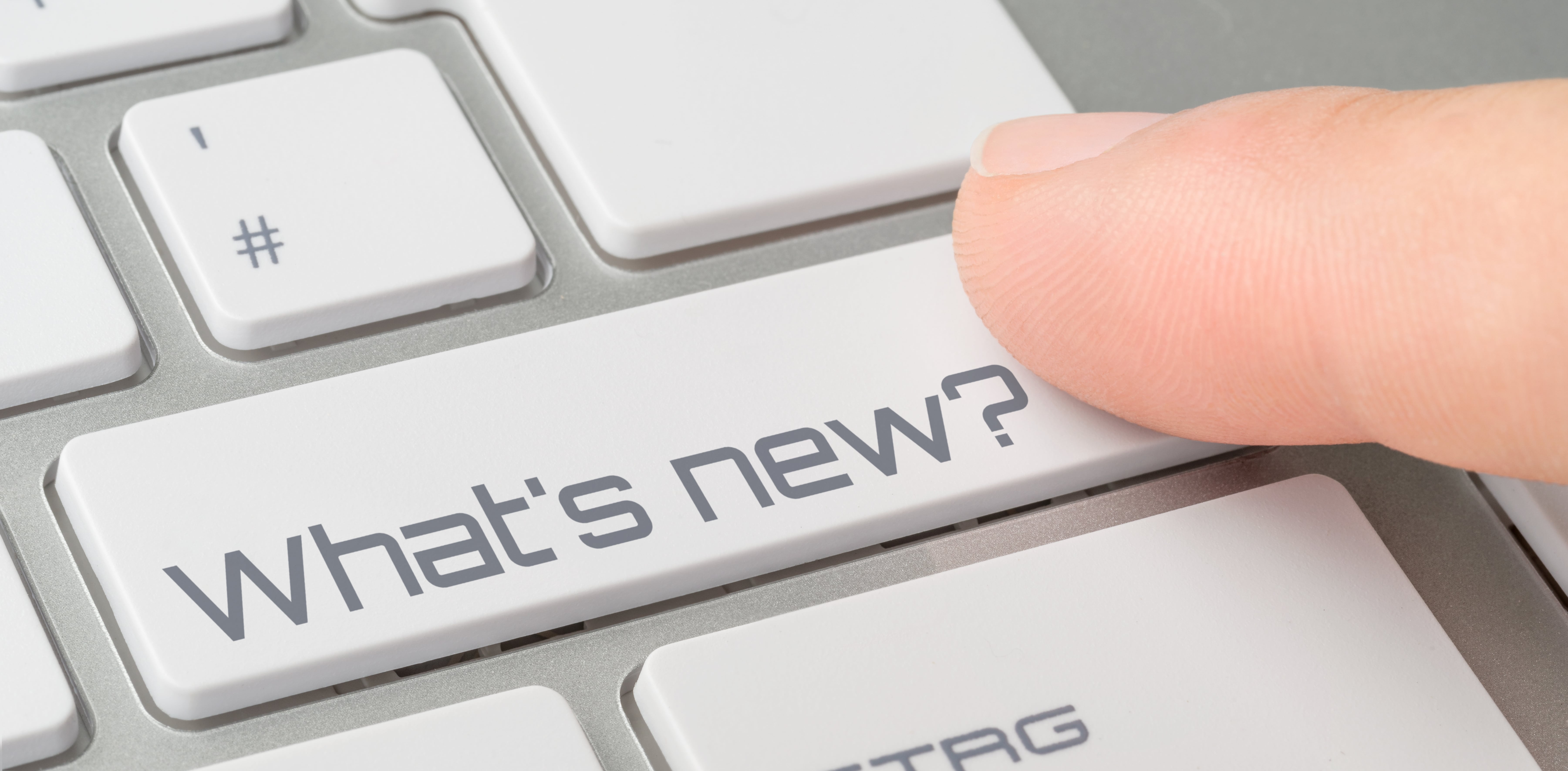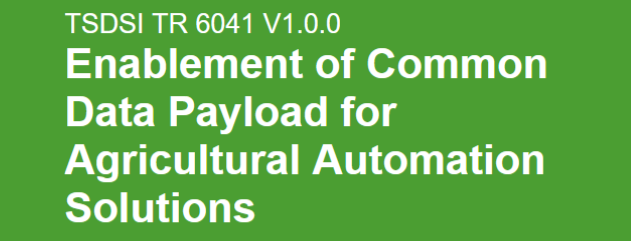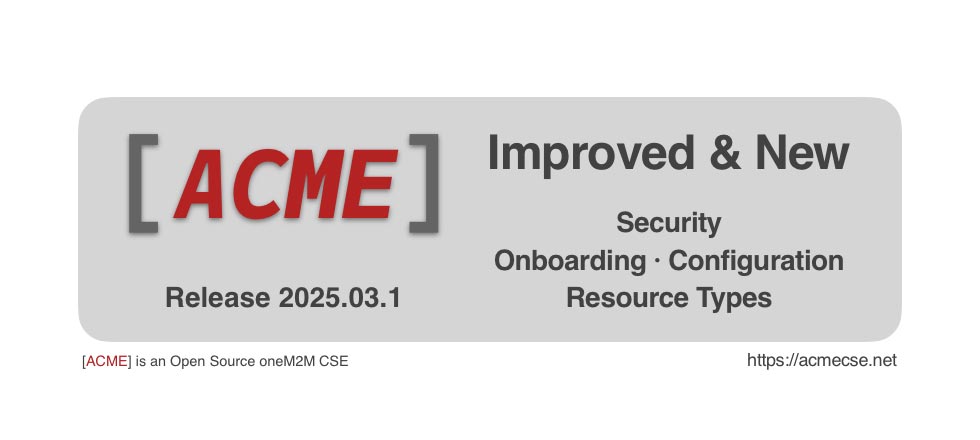The critical area of security has also been addressed throughout the 17 specifications of Release 2, by enabling end-to-end secure information exchange between any devices or servers, as well as implementing attribute and role-based dynamic access control, which allows the complexity of handling access control policies in consumer oriented IoT scenarios and enables granting temporary authorization to devices during operation. Meanwhile, semantic interoperability enables meaningful data exchange for secure distribution and reuse.
“The standards published today mark a major milestone for the Internet of Things, by providing the unique value proposition of a single interworking platform for all enabled devices,” said Dr. Omar Elloumi, Chair of the oneM2M Technical Plenary, (Nokia corporate CTO group). “As IoT devices continue to saturate society, standardisation is key to achieving universally accepted specifications and protocols for true interoperability between IoT devices and applications.”
oneM2M’s Release 2 comes at the same time as IoT announcements from John Deere, a farm equipment manufacturer, and Certuss Dampfautomaten, a German maker of steam generators used for anything from cooking sausages to sterilising medical instruments. Their recent announcements discuss the enablement of home and industrial domain deployment – another key feature of Release 2 which allows information from various industries’ applications to exchange data. These mark significant momentum in the future state of a connected society.
In addition to the published specifications, application developers now have access to user-friendly APIs and guidelines, complementing the global set of IoT standards for this critical group of stakeholders, and further facilitating access to the official source of global, IoT-application identifiers that comply with the oneM2M standard, the oneM2M App-ID registry.
“We’re already working on Release 3 as technology advancements don’t stand still,” added Dr. Elloumi. “The oneM2M global alliance is dedicated to providing the necessary interoperability to give technology suppliers and their customers secure connectivity as we embrace the next great technological revolution of the modern era.”
To view oneM2M’s Release 2 specifications in full, please visit: https://www.onem2m.org/technical/published-specifications.
oneM2M: Additional Information
What is oneM2M?
oneM2M is the global standards initiative for Machine-to-Machine (M2M) communications and the Internet of Things (IoT). Formed in 2012 by eight of the world’s leading information and communications technology (ICT) standards development organizations, with more than 200 member companies, oneM2M provides a necessary framework for interoperability between the many M2M and IoT technologies being introduced.
oneM2M is developing globally agreed-upon, access-independent, end-to-end specifications for an M2M and IoT communications and a management system that can be easily embedded within various hardware and software. oneM2M is experiencing major growth and progress towards connecting billions of devices in the field with the worldwide M2M application servers that power the IoT.
What specifications has oneM2M published?
oneM2M’s specifications include:
- TS 0001: Functional Architecture
- TS 0002: Requirements
- TS 0003: Security Solutions
- TS 0004: Service Layer Core Protocol
- TS 0005: Management Enablement (OMA)
- TS 0006: Management Enablement (BBF)
- TS 0007: Service Components
- TS 0009: HTTP Protocol Binding
- TS 0010: MQTT Protocol Binding
- TS 0011: Common Terminology
- TS 0012: oneM2M Base Ontology
- TS 0014: LWM2M Interworking
- TS 0015: Testing Framework
- TS 0020: Websocket Protocol Binding
- TS 0021: oneM2M and AllJoyn Interworking
- TS 0023: Home Appliances Information Model and Mapping
- TS 0024: OIC Interworking
- TR 0001: Use Cases Collection
- TR 0007: Study of Abstraction and Semantic Enablements
- TR 0008: Security
- TR 0012: oneM2M End-to-End security and Group Authentication
- TR 0016: Study of Authorization Architecture for Supporting Heterogeneous Access Control Policies
- TR 0017: Home Domain Abstract Information Model
- TR 0018: Industrial Domain Enablement
- TR 0022: Continuation and Integration of HGI Smart Home Activities
- TR 0024: 3GPP Release 13 Interworking
Where can the specifications be found?
To view the specifications in detail, please visit: https://www.onem2m.org/technical/published-specifications
What technologies does oneM2M support?
oneM2M’s specifications enable interworking with the following popular IoT device systems:
- AllSeen Alliance’s AllJoyn
- Open Connectivity Foundation’s IoTivity
- Open Mobile Alliance’s Lightweight Machine-to-Machine
How does oneM2M contribute to improving IoT security?
oneM2M’s specifications provide enhanced security by enabling secure information exchange between applications and host servers, as well as implementing security and access control, allowing dynamic authorisation of new devices during device onboarding.
While oneM2M has a horizontal approach to IoT, different applications may have very different security needs. IoT security has the following specificities:
- Is more difficult to achieve due to “constrained environments” (harsh operating conditions, limited CPU resources, battery power, unattended objects)
- Is very critical as IoT systems often directly control actuators that affect our physical environment (e.g. insulin pump, autonomous car), hence attack on the system may directly safety
Experts developing and deploying IoT applications tend to be field domain experts therefore may not be acquainted with cyber security risks.
Despite the diversity of application’s security needs, a Service Layer standard such as oneM2M can build on the experience and expertise already accumulated by the ICT industry, to provide M2M application developers with a “toolbox” of security tools able to address the needs of most IoT applications.
What IoT applications does oneM2M support?
The oneM2M architecture, standards and specifications provide a common means for communications service providers to support applications and services for many different industries, including:
- eHealth and telemedicine
- Enterprise automation
- Transportation
- Energy
- Public services
Where is oneM2M used today?
The following organisations are currently using oneM2M standards and specifications:
- State-run telecom research and development (R&D) company Centre for Development of Telematics (C-DoT), which successfully built and demonstrated the world's first open oneM2M-complaint middleware platform which is interoperable.
- LG Uplus, an LG affiliate, which commercialised a children’s watch based on the oneM2M standard.
- The big three operators in South Korea, ST Telecom, KT and LG U+, which all have a global standard oneM2M-certified IoT platform.
- InterDigital, based its own IoT device management platform, called oneMpower, on the oneM2M internet of things (IoT) standard. This platform was used by Buckinghamshire County Council to create smart city transport applications for its residents.
- Hewlett Packard Enterprise, which has aligned its HPE Universal IoT Platform with the oneM2M industry standard.
- The European Union Almanac initiative, which is trialling oneM2M in its smart city project in Turin.
About oneM2M
oneM2M is the global standards initiative that covers requirements, architecture, API specifications, security solutions and interoperability for Machine-to-Machine and IoT technologies. oneM2M was formed in 2012 and consists of eight of the world's preeminent ICT standards development organizations: ARIB (Japan), ATIS (North America), CCSA (China), ETSI (Europe), TIA (North America), TSDSI (India), TTA (Korea), and TTC (Japan), together with seven industry fora, consortia or standards bodies (Broadband Forum, CEN, CENELEC, GlobalPlatform, HGI, Next Generation M2M Consortium, OMA) and over 200 member organizations. oneM2M specifications provide a framework to support applications and services such as the smart grid, connected car, home automation, public safety, and health. oneM2M actively encourages industry associations and forums with specific application requirements to participate in oneM2M, in order to ensure that the solutions developed support their specific needs. For more information, including how to join and participate in oneM2M, see: www.onem2m.org.
PR Contact
Michelle Mahoney
This email address is being protected from spambots. You need JavaScript enabled to view it.
+44 (0) 1636 812 152



